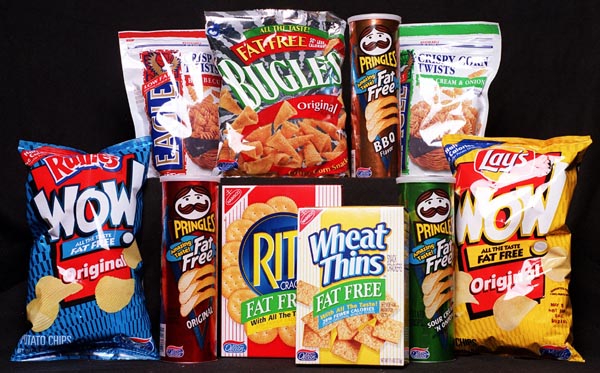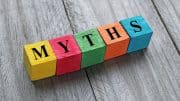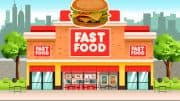Low-fat and Fat-free foods often contain as many or more calories as the full fat versions.
In college, I remember when the avalanche of low-fat and fat-free products hit the market. People flocked to the stores to buy and try these new products. The marketing had sole them as a way to manage calories and eat healthier. There were fat free cookies and snack bars and low fat potato chips. The chips contained a non-digestible chemically treated fat. A had a roommate who ate a whole bag and soon after felt the rumbling in this tummy that was soon followed by a rush to the bathroom. Today this fat substitute is no longer sold, but the additives to make them fat free are still a concern.
First, lets define what low-fat and fat-free mean:
- Fat-free foods: Contain less than 0.5 gram of fat per serving.
- Low-fat foods: Contain 3 grams of fat or less per serving.
- Reduced-fat foods: Contain at least 25% less fat than regular versions of those foods.
- Light foods: Contain either 1/3 fewer calories or 50% less fat.
The Problem With Fat-Free:
Fat-Free usually is less fulfilling and less appetizing. The food makers try to overcome this by improving taste with extra sugar, flour, thickeners, and salt, and even chemicals. That will add calories and potentially unhealthy chemicals depending on what else is added.
The eater will end unsatisfied (less satiety) and try make up for less taste and fullness by eating twice as much.
Think Good Fat not No Fat
When it comes to healthy eating, the type of fat you eat is more important than the amount of fat you eat. It is very important that we get the essential fatty acids we need to function as human beings. We need fat to have function brains and nerves and fatty acids and cholesterol are vital parts of every cell in our bodies. We can make most fats but not the essential ones.
The American Heart Association and most medical organizations recommend that you limit your total fat to 30% off your caloric intake or less and they also recommend that 6% or less of that total coming from saturated fats. The remainder of the fat should come from polyunsaturated (PUFA) and mono-unsaturated (Mono) fats such as this that come from peanut (Mono), olive (Mono), Canola (Mono) or fish oils (PUFA).
The most important reason to choose a higher fat version and use portion control is the fact that fats produce satiety and slow digestion so that you still stay full longer.
The Bottom Line on Fat-free and Low-fat:
Fat-free foods are probably the worst choice you can make in regard to your health but especially if you increase your consumption to overcome the appearance or taste. They are high in sugar and low in nutrient value. For milk and dairy, I go for skim milk and Greek yogurt, but I avoid most fat-free cookies or cakes. If you want something fat-free or low-fat, have an apple or pear. They contain more vitamins are a healthy choice.









Be the first to comment on "Myth #6: Low-fat and Fat-free Foods Are Healthier"